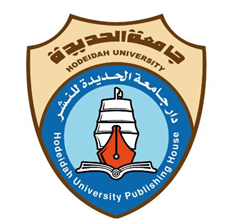Submissions
Submission Preparation Checklist
As part of the submission process, authors are required to check off their submission's compliance with all of the following items, and submissions may be returned to authors that do not adhere to these guidelines.- The research should be new and not previously published.
- The research should be written in English.
- The research should represent a scientific addition in the field of basic and applied sciences.
- Quality in idea, style, and scientific documentation, free from scientific and linguistic errors.
- Submitting the research to the journal is considered a commitment by the researcher not to publish the research in another journal, with the authors signing the copyright which is available on the site.
- The author should be written in "Times New Roman" font, paper size: (17 width x 25 height), leaving a margin of 2.54 cm on all sides, Except for the left and right side are 1.91 cm and 1cm between lines, Title must be bold (size 14), Sections (size 11) and subheadings must be bold size 10. Font size 9 in the text, and 8 in the footnote.
- The drawings, tables, figures, pictures, and footnotes (if any) should be well prepared.
- The page format is two columns.
- The author (authors) is responsible for the validity and accuracy of the results, data, and conclusions contained in the research.
- All published researches express the opinions of their searchers and do not necessarily reflect the opinion of the editorial board.
Articles
##Articles##
Copyright Notice
Authors retain the copyright of their manuscripts, and all open-access articles are distributed under the terms of the Creative Commons Attribution 4.0 International License, which permits unrestricted use, distribution, and reproduction in any medium, provided that the original work is properly cited.
Open Access
All articles published by AJOBAS are immediately available worldwide under an open-access license. AJOBAS open-access journals all publish articles under Creative Commons Attribution 4.0 International License.
Privacy Statement
The names and email addresses entered in this journal site will be used exclusively for the stated purposes of this journal and will not be made available for any other purpose or to any other party.




